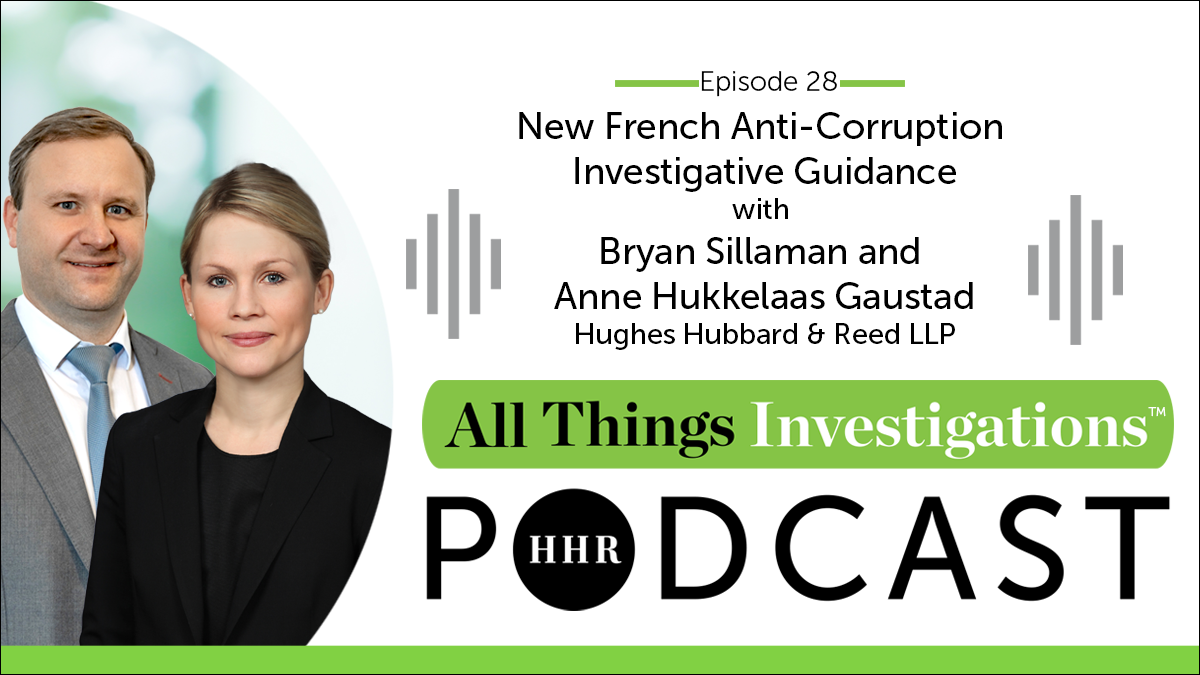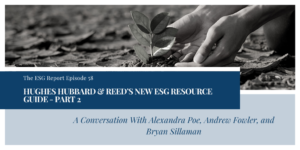
The new French Investigative Guidance, jointly introduced by the AFA (Agence Française Anticorruption) and PNF (Parquet National Financier), discusses the appropriate methodology for carrying out internal investigations, specifically concerning corruption-related instances. In this episode of All Things Investigations, law experts Anne Gaustad and Bryan Sillaman join hosts Tom Fox and Mike DeBernardis to provide a detailed overview of the guide, contrasting the similarities and differences with US guidelines, and the implications it holds for US companies.
Anne Gaustad is an accomplished French lawyer and an authority in white-collar crime and compliance matters. With over 15 years of professional experience, Anne’s practice focuses on cross-border investigations and compliance matters, notably regarding corruption, fraud, and money laundering.
Bryan Sillaman is a seasoned American lawyer based in Paris. As a partner at Hughes Hubbard & Reed, Bryan has worked extensively on matters related to the US Foreign Corrupt Practices Act (FCPA), French anti-corruption law (Sapin II), and other international anti-corruption laws.
You’ll hear Tom, Mike, Anne and Bryan discuss:
- The French Investigative Guidance is not covered by secret professional or French legal privilege, making its contents publicly accessible.
- The new guide was jointly issued by the AFA and PNF agencies to provide comprehensive guidance on conducting internal investigations.
- While there are similarities to US guidelines, the French guide incorporates the civil law tradition, stringent labor requirements, data privacy considerations, and whistleblower regimes.
- The French legal privilege holds an absolute character, and it’s a criminal violation for French lawyers to breach it.
- The new guide underscores the importance of transparency in data collection during internal investigations.
- French blocking statutes and GDPR regulations may pose potential challenges to US-based companies.
- The French guide, while non-binding, provides practitioners with comprehensive instructions for conducting internal investigations.
- The guide puts a strong emphasis on understanding the nuances of French labor law.
- The guide also encourages informing interviewees of the voluntary nature of their participation in investigations.
KEY QUOTES:
“The French Investigative Guidance represents a significant shift in the internal investigations landscape.” – Anne Gaustad
“It’s crucial for American lawyers to grasp the nuances of French labor law and privilege issues.” – Bryan Sillaman
“Transparency in data collection during internal investigations is key to avoiding legal repercussions.” – Anne Gaustad
Resources:
Hughes Hubbard & Reed website
Anne Gaustad on LinkedIn
Bryan Sillaman on LinkedIn







